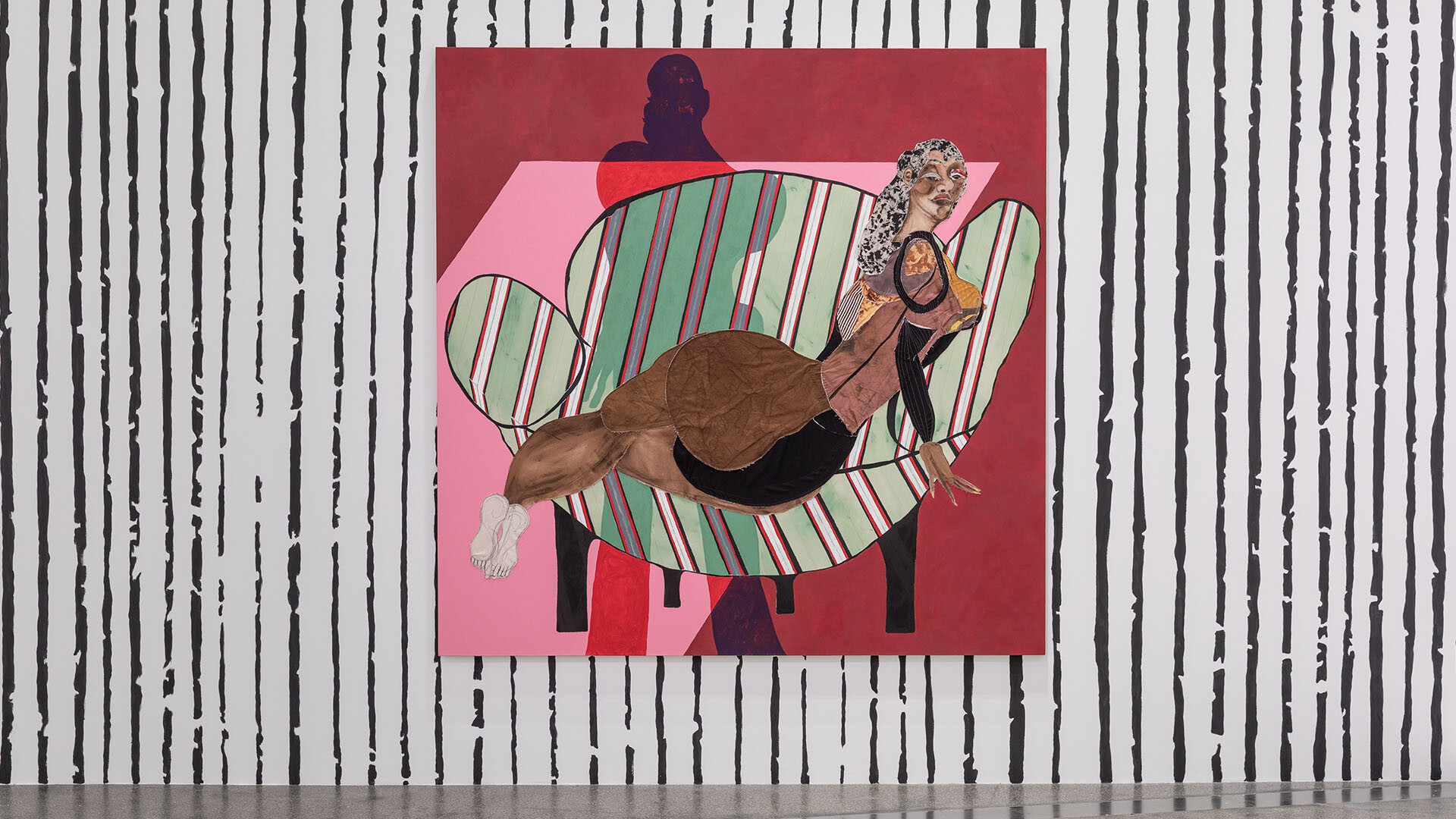Damiano Bertoli 1969–2021
Amelia Winata
In September, artist Damiano Bertoli passed away unexpectedly at the age of 52. Bertoli was a staple in the Melbourne art community. He could be relied upon to regularly attend openings and see most exhibitions. Along the way, he would dish out wit, sarcasm and charm. Seeing him across a crowded room, he would go cross-eyed as a form of greeting, breaking the ice with humour. Bertoli had a rich and expansive artistic practice, spanning collage, film, sculpture, installation, even theatre, but he was equally known for his large personality. In preparation for this piece, I spoke to several of Bertoli’s closest friends who had many things to say about him, but some underlying themes proved unanimous. He possessed a great sense of curiosity and generosity; he loved sharing knowledge; he built rich relationships with others through engagement with art; and that he has left behind a massive legacy—albeit one that could have been much, much bigger.
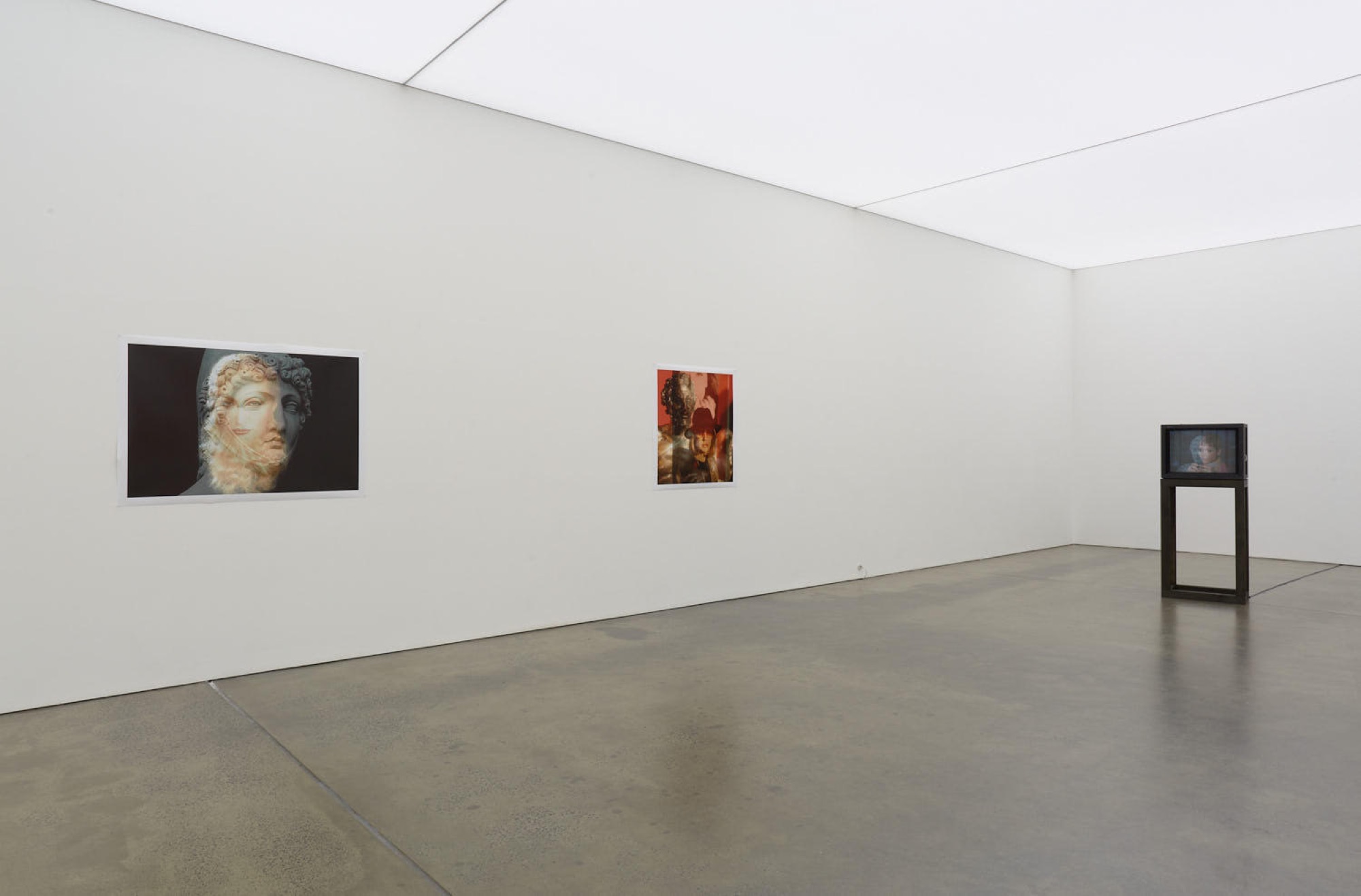
Bertoli produced and showed work from the ’90s onwards. His practice in large part orbited around the year of his birth—1969—and the various transformative cultural and historical events took place around that period: the rise of the Manson Family in California, or the popularity of the band Soft Machine, for example. Amongst his best-known works was his restaging of a largely unknown Picasso performance, Le Désir attrapé par la queue, which he discovered when Soft Machine took part in a 1967 version of it. Bertoli referred to his practice since 2002 under the umbrella title Continuous Moment, predicated on the logic of interconnected and dragging time. Every iteration of Le Désir, for example, was indexical of three moments in history—Picasso’s writing of the play, the 1967 performance Soft Machine took part in, and Bertoli’s contemporary iteration of it. These specific temporal markers were then further complicated by the inclusion of other asynchronous historical bookmarks; in one iteration of the play, for example, Bertoli played a combination of David Hockney and Simone de Beauvoir. Melbourne artist-friends, including John Nixon, Lisa Radford and Joel Stern, took on various parts to mimic Picasso’s own inclusion of his recognisable friends in the original performance.
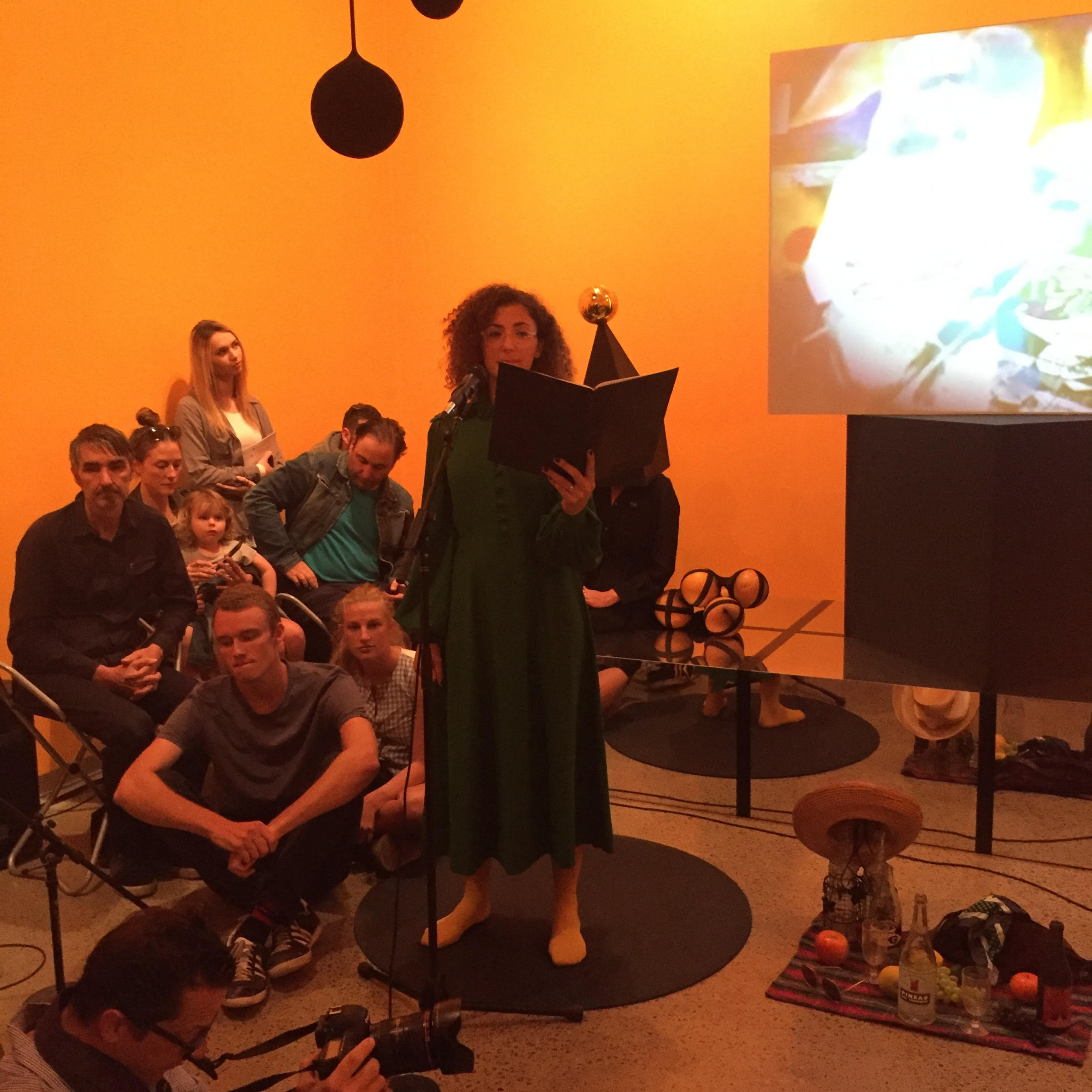
Bertoli’s references to the past may look postmodern and cynical to the untrained eye, but infact these quotations stemmed from a deep reverence for the artists and artworks out of which our contemporaneity grew. By the same token, we can also think of 1969 as the nexus point between modernism and the contemporary and, therefore, an apt moment from which to pivot back and forth in time—collage provided the ideal method through which to visually layer time in his post conceptual practice. At the time of his passing, Bertoli had been working with his friend Warren Taylor on a publication about the Italian designer, curator and record producer Gianni Sassi. Sassi’s design work, produced in the 1970s and 1980s, represented a postmodern visual sensibility and yet his participation in Italian Fluxus in the 1960s also positioned him at the same late modern crossover Bertoli explored in his work. Bertoli was particularly interested in Sassi’s photos of polaroids—pictures in pictures—a technique we might view as loosely analogous to Bertoli’s own overlapping imagery. Bertoli’s interest in graphic design was also befitting of his tendency to replace written language with photos— for example, in his artist books such as Continuous Family (2009), which documents through photographs members of the Manson family “from the cradle to the grave”, as Bertoli put it. Taylor says that he and Bertoli often communicated with images—texting or emailing them instead of words.
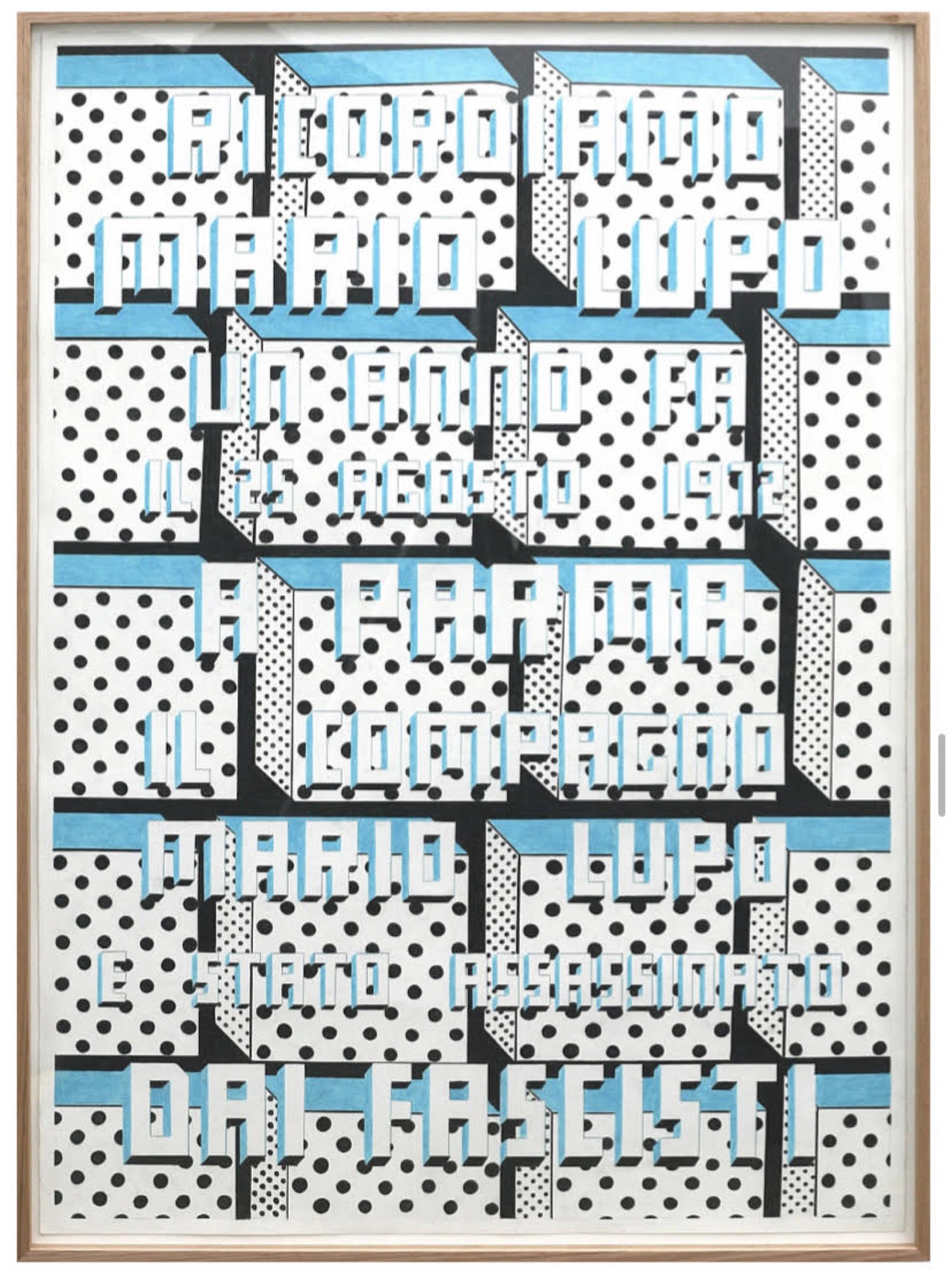
Bertoli was deeply interested in topics beyond visual art. Indeed, the breadth and depth of his interests were unparalleled and would seem, to many, to be contradictory. Amongst those were football, jazz, classical music, Italian design, hip hop (the new Kanye album was too long and “underdeveloped” and you could tell many of the collaborations were done remotely). Darcey Bella Arnold, who was taught by Bertoli at VCA in 2004 and who remained friends with him, says that Bertoli was very proud of these “paradoxes”. “Damiano loved football and he allowed it to coexist with art. I felt this was unique because there’s a perceived underlying divide between art and sport. I can hear him scoffing right now with his ‘who cares, do what you want’ type attitude.”
Bertoli was quite determined to perfect any area he was interested in. Sam George recalls, for example, Bertoli’s borderline obsessive relationship with a particular brand of yoghurt that she had gotten him onto when they visited a a Greek street festival in 2019. After making the switch, Bertoli never returned. He would regularly go through three kilos of it a week, snacking on it during his regular bouts of sleeplessness (but eventually choosing to avoid that habit in an attempt to “improve his sleep hygiene”) and entering an inconsolable state when it was sold out at the supermarket. When friends suggested other brands, Bertoli researched them, gave them a go and sought the opinion of his peers. Eventually he stuck with George’s brand. “He wanted it to be right. And as soon as he thought something wasn’t, he questioned it”, says George. Little was immune to his scrutiny—not even a brand of yogurt.

I suggest to George that Bertoli was “particular”, but she is quick to check my language. “Particular” borders on anal retentive or fussy. She says his attention to detail was a strength. “He understood everything is important.” Speaking in a video produced on the occasion of the 2016 Heide exhibition Dancing Umbrellas, Bertoli explains his choice of colour for the gallery space he was exhibiting his ongoing project Continuous Movement in. The room was painted in what Bertoli called a very “Picasso-esque yellow”. Watching him speak, it becomes evident that a lot of thought went into Bertoli’s choice of colour—he speaks about how the orange connects to the “psychedelic” vibe of the 1967 performance, while also allowing him to “construct a climate”. In a very short space of time, the viewer is offered an insight into Bertoli’s complex thought processes that extended to every aspect of his practice and, indeed, life. Instead of “particular”, says George, “the language should actually be ‘he was so good’”.
Bertoli’s passing in the midst of Melbourne’s sixth hard lockdown was devastating for the broad community mourning him yet unable to (legally) come together in person. But according to one of Bertoli’s closest friends, Raafat Ishak, Bertoli was very content with lockdown—“he kind of talked me into it (enjoying lockdown)”—and that he was excited to have the time to produce work for his major 2022 solo exhibition at CCP. Ishak met Bertoli back in 1999 when they were both working on an install for Juliana Engberg’s Melbourne Biennial. They then lived together in Northcote for a number of years. This would be one of the rare occasions when Bertoli would live with anybody else. The pressure was too much, says Ishak. “He always wanted to be a good housemate. But that was a big responsibility for him”. Between 2003 and 2010, Bertoli and Ishak were part of a team that ran Ocula Lab, a makeshift gallery established by Alex Rizkalla and Julie Davies that was set up in an old milk bar in Brunswick West. They collaborated periodically during their more than two-decade friendship, first around 2000 when they were both curated into an exhibition called Paintings are Ace at Linden Contemporary and decided to produce a work together, not because they had any plan but because they wanted to do something together. The resultant work was a site-specific install, made from found objects that were then discarded. Since then, the pair had collaborated on several collections of paintings and drawings, including the 2017 Hebdomeros at Sutton Gallery, a series focused on the pair’s shared interest in Giorgio de Chirico. The two would pass works back and forth, working on a piece away from the other. “It (the collaborative process) was never antagonistic. It was an endless, continuous exchange of aesthetic interests. It had no endpoint except the opportunity—that was the endpoint.”

The opportunity for working with people was a central motivator behind what Bertoli chose to produce. He loved lockdown for the rare chance to focus on work, but he was unequivocally a people person. Despite his often gruff, brattish demeanour, Bertoli always wanted to create meaningful relationships—Amy May Stuart posted an Instagram dedication to Bertoli in which she described him aptly as “the most pretend-grumpy-guy out”. “He loved sharing knowledge”, says Ishak. “Maybe that was a way around social anxiety. He wanted something useful to say to people”. He knew how to read people and would quickly work out exactly what every person’s interests were. This is why, says Sam George, his passing “has affected even people who only had one conversation with him”.

Bertoli had recently been supervising honours students at Monash University, where he is said to have imparted a high level of energy and commitment to his students. Matthew Ware, who was being supervised by Bertoli at the time of his passing, says that Bertoli was one of the few people who validated his love of art. “The ultimate thing Damiano taught me is that you can keep being interested and engaged (in art) and be simultaneously escapist—and that you can keep doing that, that it doesn’t have to stop.” Because he was an insomniac, Bertoli was often late to class. But he would stay on long after the official end-time, happily chatting with his students. “He wasn’t necessarily a selfless guy”, says Ware, “because he would not have done it if he didn’t love it”. He approached his students with a sense of ease, often impressing them with his weirdly youthful knowledge. When, for example, Ware said he liked Young Thug, Bertoli retorted by saying Young Thug was “old” and that Lil Durk—a lesser-known rapper—was superior.
If you knew Bertoli, you also knew about his 17-year-old lorikeet, Goochie, whom Bertoli immortalised with his own Instagram @goochmoodz. “Goochie.Gucci.Goochy” reads the page’s tagline, although Bertoli affectionately referred to him as Gooch (surely Bertoli appreciated the tongue-in-cheek nature of the name) or The Yellow Prince. According to Lisa Radford, Bertoli was “like a gentle dad” with Goochie and the two were very familiar. Bertoli once told me that Goochie is carb-mad and that he is particularly fond of pizza crust and chips. Goochie cannot fly well and so Bertoli frequently carried him around his apartment. A screenshot taken by another of Bertoli’s students, Tommaso Nervegna-Reed, shows Damiano teaching a class with Goochie casually perched on his shoulder—living up to the label of “Burdy Daddy” he gave himself.
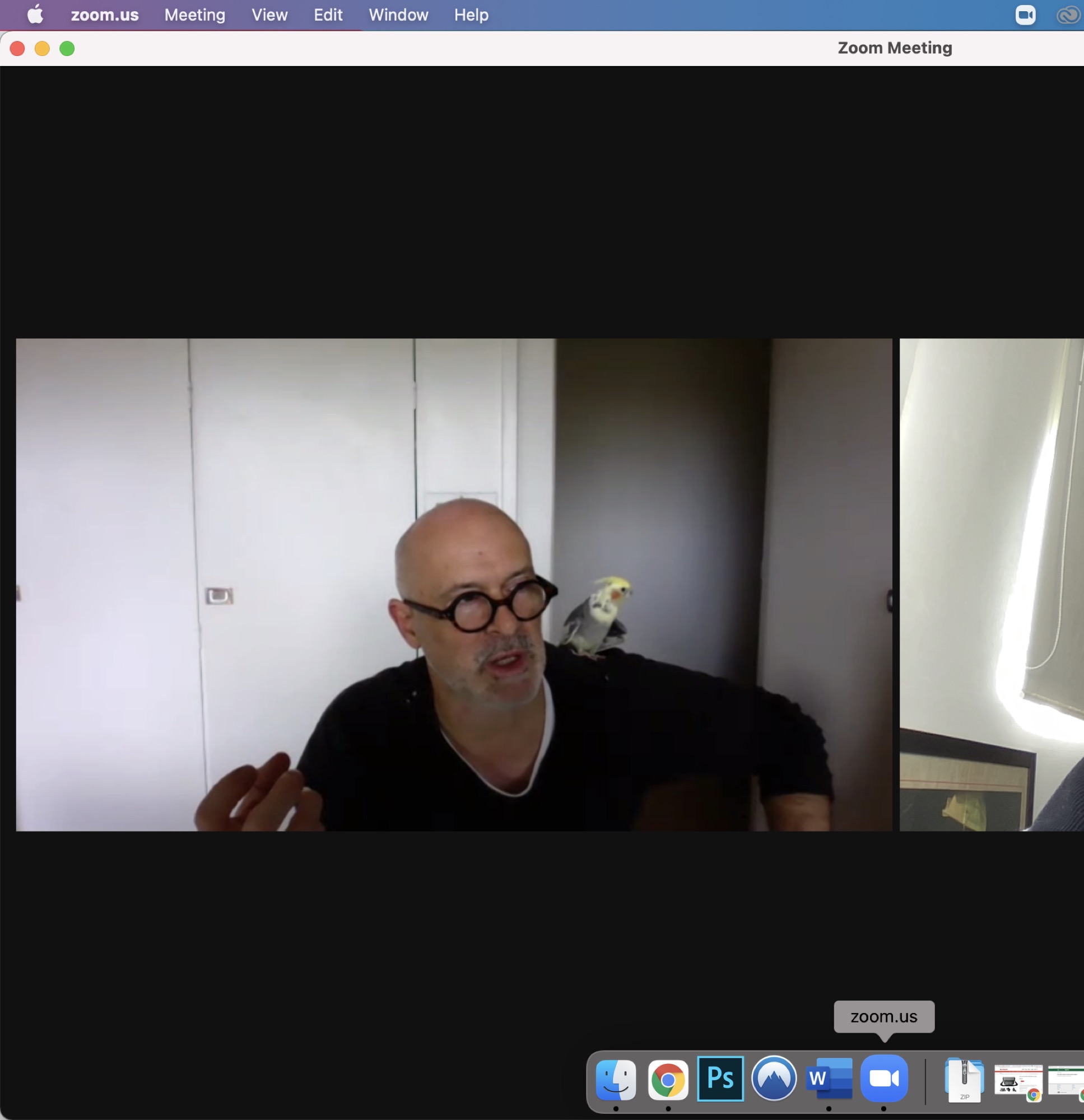
It’s almost impossible to say what Bertoli’s legacy is—or should be—only a month after his passing. Recently, Bertoli’s artistic output had accelerated significantly and he was arguably in the best place he had ever been as an artist. He was preparing for his CCP exhibition and a large solo exhibition at Neon Parc in 2022. He had enjoyed a solo exhibition at Macintosh Lane in London in 2019 and was being collected more than ever. “I feel like (his practice) is missing the next twenty years”, says Ishak. But maybe the sense of community that Bertoli built around himself should also be seen as a massive legacy. “Even with opportunities overseas he was an example of an artist living a full life in Melbourne, having a solid career, being serious about it—a working artist”, recalls Darcey Bella Arnold. Bertoli’s immense knowledge and obsessions live on—distributed across the hundreds of art workers whom he counted as friends or, as Bertoli might have put it, “associates”. I am trawling through correspondence with Bertoli and I come across an email for his 2018 iteration of Le Désir. I ask who it will star and in response he says, “No stars, yoyo. It’s an assemblage of collective enunciation!” In Bertoli’s eyes, equal representation through collaboration was key.
My deepest gratitude goes to Sam George, Raafat Ishak, Fiona Abicare, Lisa Radford, Warren Taylor, Darcey Bella Arnold, Matthew Ware, Helen Hughes, Geoff Newton, Tommaso Nervegna-Reed, Tobias Titz and Yanni Florence x
Amelia Winata is a Narrm/Melbourne-based arts writer and PhD candidate in Art History at the University of Melbourne.

